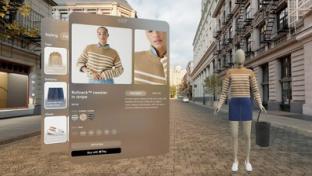Three retail tech trends to watch at NRF 2024
The NRF 2024 “Big Show” will give a good indication of how key retail technology solutions are evolving.
Much like the holiday season that immediately precedes it, the annual National Retail Federation (NRF) conference and exposition always seems to arrive much sooner than seems possible. But it’s been a year since NRF 2023, and a very active year in retail technology at that.
One of the many great things about the NRF Big Show is that it provides valuable insight into the state of major trends affecting the retail technology industry. Here are three trends NRF 2024 is poised to help illuminate:
Will AI be the new, shiny thing - or plumbing?
Clearly, artificial intelligence (AI), especially innovative models such as generative AI, was the dominant technology in retail, and everywhere else, in 2023. And it’s not exactly going away or losing importance in 2024.
However, a funny thing happens to next-generation technologies as they begin to spread in the retail industry. They go from buzzword (the beginning stages of a solution’s introduction when nobody is even totally sure how a solution is defined or what it does) to leading-edge (pioneering vendors and retailers begin defining a framework through implementations) to mainstream (large numbers of Tier I and even Tier II and III players start using it) to plumbing (the technology is part of the industry backbone and its presence is assumed).
Typically, this process takes a few years (think of the maturation paths of technology categories such as omnichannel or mobile). But as exemplified by generative AI, which publicly debuted with the ChatGPT AI platform in November 2022, AI only spent a matter of weeks in buzzword status and was already being actively used by early adopters in the beginning of 2023.
At minimum, AI is a mainstream application that is widely deployed in every area of the enterprise. Is it plumbing yet? The Big Show exhibit floor and sessions should provide a strong indication.
How to defeat supply chain disruption
Supply chain disruption emerged as a major issue with the emergence of COVID-19 in 2020, and was stoked by a variety of weather and geopolitcal events, as well as pure bad luck (like the Suez canal accident).
Fortunately, the global supply chain has recovered from peak disruption levels observed in 2020 and 2021, but it still does not function as smoothly as it did pre-2020. It also remains prone to shocks from ongoing global instability and climate events.
Retailers cannot prevent supply chain disruption, but they can use a variety of technologies to help mitigate it, if not completely defeat it. Inventory tracking and tracing via identifiers such as barcodes and RFID tags, using machine learning (ML) to better anticipate and develop disruption strategies, and leveraging the expertise and capabilities of third-party platforms just a few of the possible technological responses to supply chain disruption.
The NRF Big Show should be informative for retailers seeking to discover what technology solutions are most popular for solving disruption in their supply chains, as well as what may unfold in the next 12 months.
Checking out the state of checkout
Checkout has evolved far beyond the old-fashioned cash register, and even the client/server-based POS terminals that first revolutionized the final step of in-store commerce in the 1990s.
However, next-generation checkout is in a bit of a flux. Reports indicate that many retailers are scaling back or eliminating the use of self-checkout kiosks, but this hardly means that efforts to streamline checkout are at a standstill.
Frictionless solutions that use tools such as computer vision and shelf sensors to automate payment are slowly expanding from grocery and convenience stores into sports arenas and airports, and AI-equipped “smart carts” let shoppers bag and pay from anywhere in the store.
Many retailers are also enabling shoppers, as well as store associates, to manage checkout via mobile app and device. Meanwhile, the unified commerce model often centralizes management omnichannel retailing activities from the POS.







